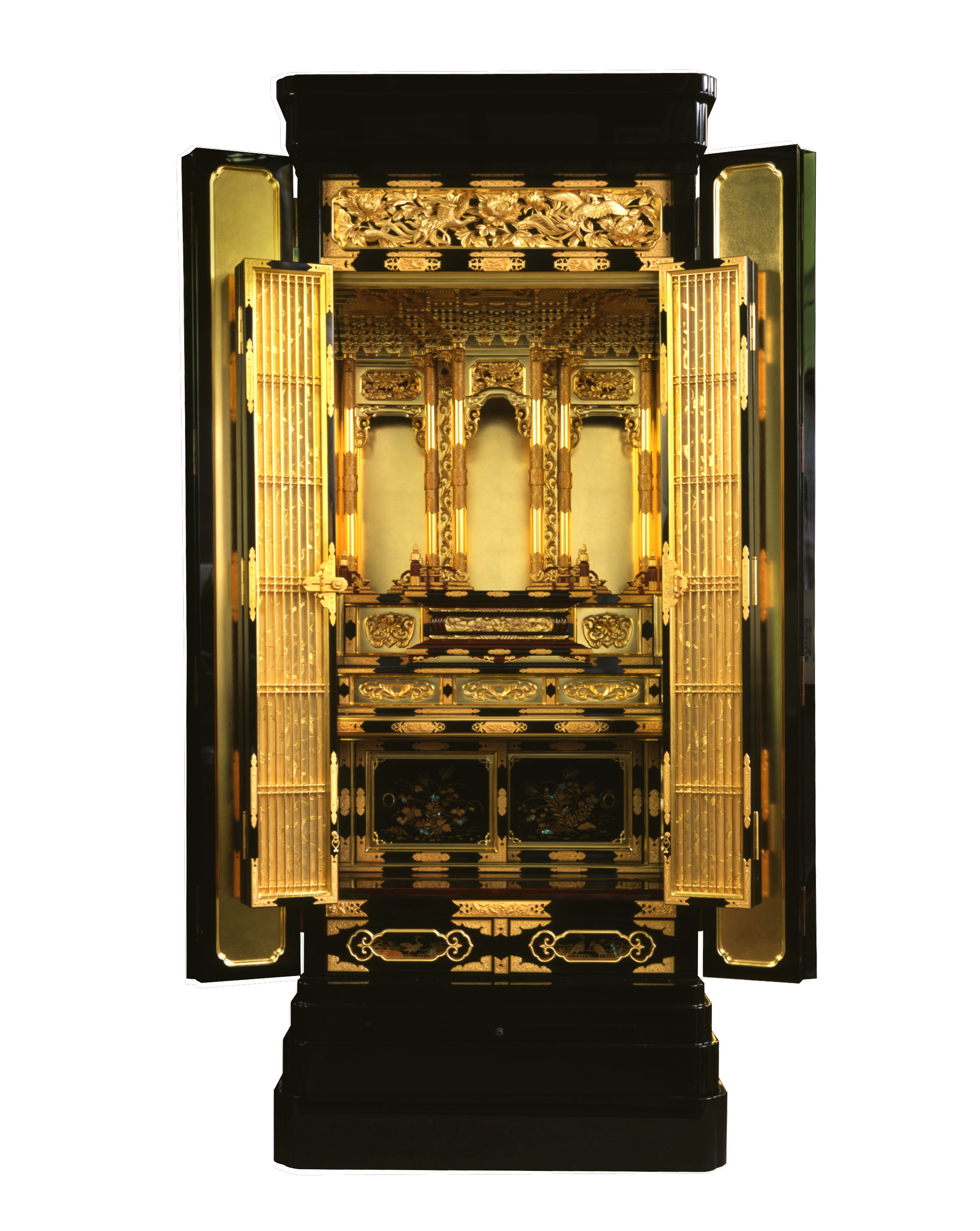KYO Butsudan (Household Buddhist Altars)

Household Buddhist altars are a variation of miniature shrines called zushi and were originally used exclusively by the warrior classes. The production of ordinary household altars is thought to have begun at the beginning of the Edo era (1600-1868), when the Tokugawa Shogunate introduced policies requiring their use.
In addition to being the headquarters for around 100 different sects, Kyoto has nearly 3,000 temples as well as countless national treasures and cultural assets. Kyoto household altars are exact replicas of the inner sanctuary of the main temple for each sect. Each altar is constructed with a high level of craftsmanship, down to the finest detail.
Feature
Kyoto is home to around 3,000 temples, including the head temples of more than 100 different sects, as well as a number of national treasures and cultural assets. Kyoto household altars, also referred to as a Kyo-mono, are high-quality, exquisitely faithful miniature representations of the main hall of each sect’s head temple.
How to make
The manufacturing process involves the contribution of numerous artisans specialized in making around 2,000 distinct parts. Individual specializations include wood-base creation, wood carving, lacquering, gold embossing, gold-sprinkled lacquering and metal ornament fabrication. All stages of production are supervised by the commercial department, including final assembly as well as retail and distribution.

